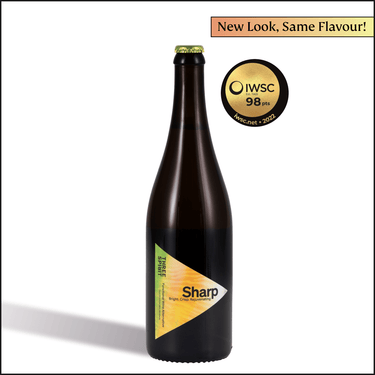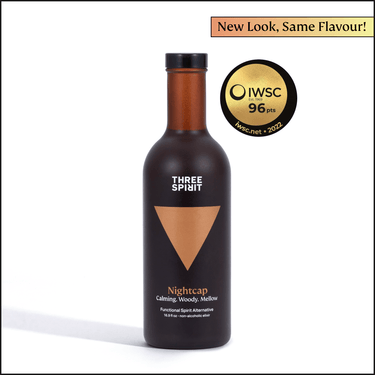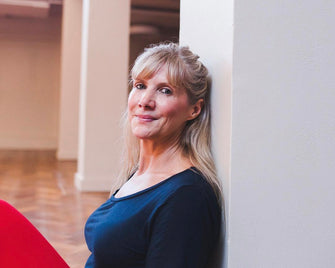So, what is biohacking?
Really, biohacking is the quest for optimal mental and physical health and performance – who doesn’t want that? The actual definition is, “the art and science of changing the environment around you and inside you, so you have more control over your own biology.”
Whether you want to end bloating, get rid of brain fog, have deep restorative sleep, feel and look amazing, boost your IQ, prevent chronic disease, feel energised from the moment you wake up to the moment you go to bed, there’s a hack for that. Generally speaking, we’ve forgotten how good our bodies are designed to feel. Biohacking allows us to take control of our own health.
One thing to note is that biohacking is not putting microchips inside your body – that’s transhumanism (I personally wouldn’t want to put metal in my body!)
How did you get into biohacking?
I’ve always been into fitness and nutrition. I discovered bulletproof coffee – and I soon realised there was way more to it than just a performance coffee, and I entered the rabbit hole!
While I was fascinated, I only had one or two friends who were open to this new world – it was pretty niche. There were huge communities in the states but nothing in the UK, until my friend Tim Gray started a little meet-up group in London. Since then, a huge social circle has emerged which is epic. It’s a growing movement, and I’m excited to be part of it.
What are your favourite biohacks for beginners?
You don’t need to spend money to make a difference to your health. I believe some of the best ‘hacks’ and biggest wins are free – like optimising sleep, nutrition, sunlight, cold and hot exposure, and exercise.
Let’s delve into sleep – how can we all get better sleep?
So, one of the first things to do is reframe the importance of sleep. Too often it’s seen as something we do once we’ve finished with the day – no matter what time we eventually get to bed. We need to flip this on its head and see sleep as our number one priority, and safeguard it.
It might seem counterintuitive, but with a proper night’s sleep, you’re much better equipped to handle the next day. Plus, it’s not necessarily about sleep length and whether you get those 7-8 hours, it’s about the quality of those hours. Did you really get enough REM and deep sleep?
One of the best things I’ve invested in is an Oura ring – it’s the king of sleep trackers, and the data I’ve got from it is phenomenal. I particularly love that it measures your HRV (heart rate variability) which is a great metric to understand how well your body has recovered from exercise, illness, and stress. Regardless of whether you invest in a tracker, there are five top tips that I believe will help everyone:
5 Rules to Get Started
1) Reduce blue light in the evening
Blue light is essentially junk light that comes from our screens. It’s a wake-up call that signals to our brain that it’s midday, and it suppresses melatonin (the sleep hormone) and disrupts our circadian rhythms. I get that you can’t always avoid screens, so I recommend an app like F.lux which reduces the blue light, or wearing blue blocking glasses (always get them from a reputable brand like Ra Optics, and avoid the fakes on Amazon).
2) Stop eating three hours before bed
This is a big one. If I eat too close to bed, my heart rate stays elevated and prevents me from getting quality, restorative sleep. I usually finish eating by 5-6pm and I feel much better for it (this isn’t particularly sociable when eating with friends, so this rule often gets scrapped).
3) Cut down on alcohol
I’m not saying never drink, but be aware that it wrecks your sleep. It might feel like a few drinks helps you drift off, but it robs your REM, and you’ll largely stay in light sleep, so it’s not restorative. I drink now and then, but it’s usually a quality natural red wine, or a ‘cleaner’ alcohol like tequila or whisky. This is also why I’m so excited that non-alcoholic spirits are becoming mainstream – you can still have a brilliant evening, and enjoy the next day too.
4) Wind down before bed
This one makes a huge difference to me. Whether it’s meditating, doing breathwork, reading, or journaling, it ensures I switch off from the day, and can easily fall asleep. Right now breathwork is my favourite – it calms your nervous system and switches you from sympathetic (flight or fight mode) to parasympathetic (rest and digest). Game changer.
5) Blackout your room
You want your room to be as dark as possible. Blackout blinds are ideal, but I use an eye mask instead (I can’t install blackout blinds as I’m renting my house, although I bought velcro sticker circles to keep my blinds flush to the wall and reduce the light they let in – much cheaper alternative!). You also want your room to be as cool as possible, so consider sleeping with the window open, using a fan, or if you’re fancy, you can use a Chilipad (a mattress cooler pad).
How could people optimise their nutrition?
Many people focus on adding ‘magical’ supplements, powders, and green juices. But it’s first about removing things that make you weak – like inflammatory seed oils, refined carbs and sugars – and replacing them with nutrient-dense alternatives.
Things to remove include ‘healthy’ snack bars that are full of seed oils (like sunflower oil, which is awful for you – I won’t eat anything that has it). Just as bad are sugar alcohols – these are sneaky chemicals that technically aren’t classed as sugar (even though they score higher on the glycemic index, and spike your blood more than regular sugars). Many brands use these as they can claim ‘low sugar’, but they can play havoc on your gut. Look out for names like mannitol, sorbitol, maltitol, you’ll be surprised how many foods these are in.
Nutrition is so unique to everyone, and is impacted by your genetics and environment. For me, a healthy, nutrient-dense diet means regeneratively-farmed and grass-fed meat, organ meats. I know this isn't for everyone, but the way I see it is they’re a prized possession in other cultures and in the animal kingdom – alpha wolves and lions will eat the liver and heart first, leaving the muscle meats for those lower in the pack! Bone broths, and organic vegetables are a must.
I am a HUGE foodie, and love cooking from scratch. I avoid buying packaged foods. I’d say 90% of the time I eat really well, 10% I eat whatever I want. I’ve always had a sweet tooth, but some dark chocolate or my “famous paleo cookies” usually curb that.
One other thing I believe most people would benefit from is intermittent fasting.
Talk to us about intermittent fasting.
Quite simply, it’s an eating pattern where you eat within a specific time period, and fast the rest of the time – the most common is 8:16 (so you eat within an eight hour window). Fasting isn’t a new concept; it’s one of the oldest dietary interventions in the world.
By giving your body a break from constantly digesting food, you’re working in a preventative way to ensure you reset your metabolic hormones, ward off chronic disease, improve memory and brain function, and boost your energy levels.
I’m also a big fan of longer fasts (24-48 hours) which is where you turn on autophagy. Autophagy (meaning ‘self eating’) is when your healthy cells eat damaged and defective tissue in order to produce new healthy cells.
As well as the health benefits, there’s a stoic element to it: it develops mental resilience, self-discipline and mindfulness.
What’s the deal with sunlight and junk light?
Optimising light is fundamental for our health and setting our circadian rhythms. Ideally I’d watch the sunrise and sunset, but when living in London that’s not really possible! Instead, I use an infrared light first thing in the morning and again in the evening to replicate this.
Then one of the first things I do is get outside and expose myself to natural sunlight, as it stimulates hormone and neurotransmitter production. I go out in my garden or go for a quick walk (often with my bulletproof coffee in hand).
As mentioned earlier, reducing blue light (aka junk light) from screens is so important. In fact, junk light is said to be just as bad as junk food!
Tell us more about hot and cold exposure?
Most people have heard of Wim Hof aka “the iceman” who’s brought cold therapy to the masses, which makes me very happy!
Cold therapy (think ice baths) and hot therapy (think saunas) are acute stressors that make you chronically strong – they boost your immunity and mental resilience, reduce inflammation, flush out toxins, and so much more.
Staying warm and cosy is easy. As Wim Hof said: “If we always choose comfort, we never learn the deepest capabilities of our mind or body. Deliberately training your body and mind to handle cold, pain, discomfort, and boredom has profound benefits, and the endorphin rush makes you feel amazing after.
Get started with 30 seconds of cold showers at the end of a hot shower, and work your way up to ice baths. Trust me, it becomes addictive!
How can we exercise more effectively?
So this is only relevant for women, but it’s transformative! As well as a 24-hour circadian rhythm (which both sexes have), we also have a 28 day infradian rhythm. It governs our reproductive system, brain, microbiome, metabolism, immune system and stress response system. It breaks down into four phases (follicular, ovulation, luteal and menstrual) and the wrong training style (and nutrition) during certain phases will increase stress and inflammation, disrupt hormones, make PMS worse. You know when you try your hardest and you just can’t finish the exercise class, run as far, or lift as heavy? That’s not you being a failure, that’s just you not being in tune with your biology!
As a quick overview, I’ll do lots of weightlifting and more intense workouts during the follicular phase, as this is where your body reacts more efficiently to boost metabolism and build lean muscle. During ovulation your estrogen and testosterone are at peak level, giving you energy to burn, so this is where I do HIIT, spin, and try and hit my PBs. Then around 5 days or so into the luteal phase, hormones diminish and you shift out of muscle-building, so I focus on flexibility and gymnastics strength training. Then finally during menstruation, hormones are at their lowest and any form of intense exercise will backfire and turn on fat storage. I do foam rolling, walks, and yin yoga at most.
To me it’s crazy that we’re not taught about this! Learning about it has been a game changer, and I highly recommend Alissa Vitti’s book ‘In The Flo’ to learn more.








